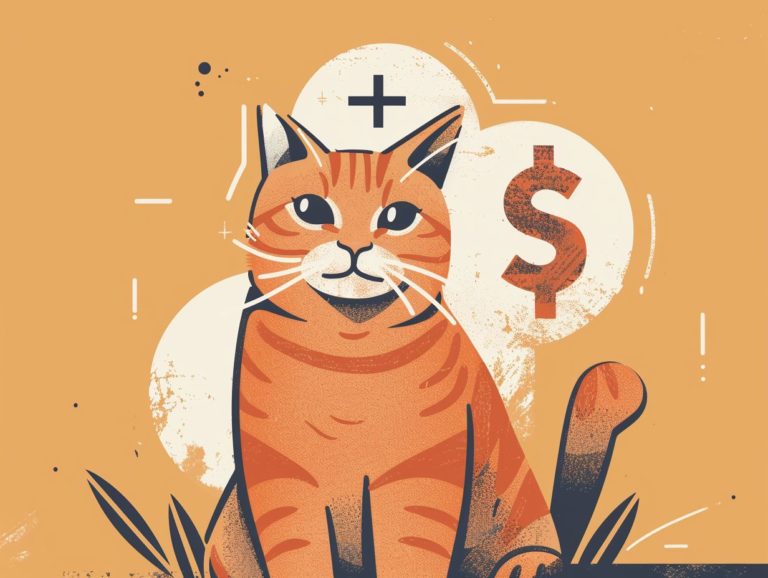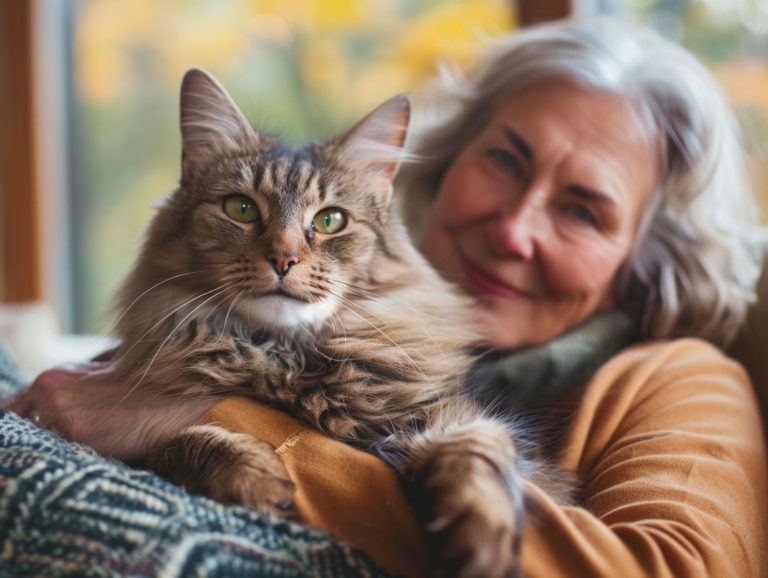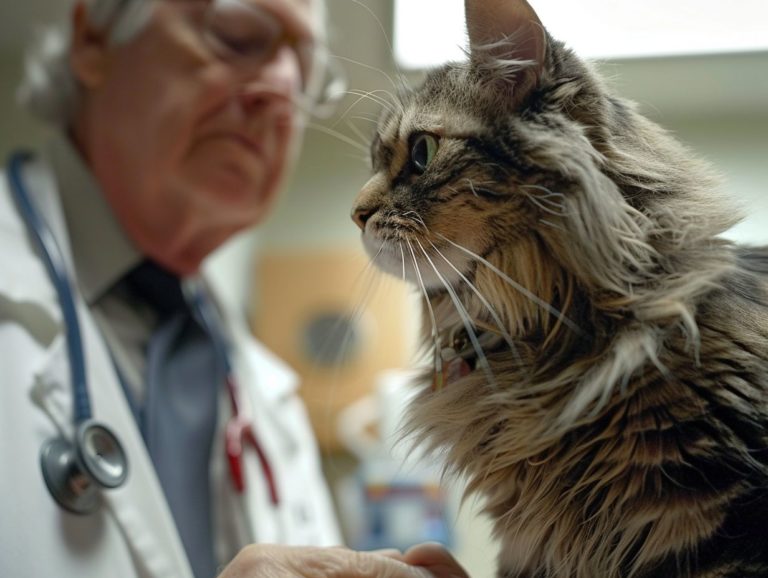Senior Cat Insurance A Guide For Multipet Households
This comprehensive guide covers senior cat insurance, including an explanation of what senior cat insurance entails, the benefits of senior cat insurance, factors to consider when purchasing senior cat insurance, how to acquire senior cat insurance, and tips for managing multi-pet insurance policies.
Key Takeaways:
Understanding Senior Cat Insurance
Senior Cat Insurance offers comprehensive coverage tailored to the specific health requirements of aging pets. As pets grow older, their health needs evolve, and age-related illnesses and conditions necessitate specialized insurance plans for adequate protection.
Senior cat insurance encompasses coverage for common ailments prevalent in older cats, including arthritis, kidney disease, and diabetes. These plans typically include benefits for routine wellness exams, diagnostic tests, and alternative therapies like insurance tips for first-time buyers aimed at enhancing the overall well-being of senior cats.
This specialized insurance ensures that pet owners can provide optimal care for their aging feline companions, offering them reassurance and financial security against unforeseen health issues.
What is Senior Cat Insurance?
Senior Cat Insurance is a type of pet insurance policy designed to cater to the medical needs of older cats. These policies offer coverage for a range of health-related expenses commonly seen in geriatric felines. As cats age, they often develop conditions like arthritis, dental issues, and chronic diseases, underscoring the importance for pet owners to consider investing in senior cat insurance.
Typically, these plans include veterinary visits, medications, surgeries, and specialized treatments tailored to meet the specific requirements of aging cats. With a senior cat insurance plan, owners can have peace of mind knowing they are financially equipped to provide optimal care for their cherished pets during their later years.
Benefits of Senior Cat Insurance
Senior cat insurance offers benefits such as discounts for multi-pet households and comprehensive financial coverage. These policies provide a wide range of coverage for the common health issues that senior cats may encounter, allowing pet owners to ensure timely veterinary care without the burden of high expenses. Along with covering routine check-ups, vaccinations, and treatments for illnesses, insurance policies often extend discounted coverage for multi-pet households, making it a cost-effective choice for families with multiple pets.
Coverage for Common Health Issues
Senior Cat Insurance offers extensive coverage for prevalent medical conditions that impact older cats, such as arthritis, kidney disease, and diabetes. These insurance plans commonly provide financial support for diagnostic exams, prescription medications, and treatments associated with these conditions.
Along with addressing chronic illnesses, senior cat insurance often incorporates additional options for preventive care, including routine exams, vaccinations, and dental cleanings. This inclusive coverage assists cat owners in handling the increasing expenses of caring for senior cats, guaranteeing that their beloved feline companions receive essential medical attention to preserve their quality of life during their later years.
Cost Savings for Multi-Pet Households
Senior Cat Insurance offers a cost-effective solution for individual pets, with additional discounts available for insuring multiple pets under a single policy. By consolidating all pets under one plan, the overall premium is reduced compared to insuring each pet separately. This approach not only lowers the cost of senior cat insurance but also streamlines the process and administration of pet insurance.
Having all pets covered under a single policy simplifies communication with the insurance provider, facilitates monitoring the care of each pet, and guarantees consistent insurance coverage for all pets.
Factors to Consider When Choosing Senior Cat Insurance
Determining the best Senior Cat Insurance depends on factors such as the cat’s age and health, the coverage provided by the insurance policy, and the associated premiums. As cats age, they become more susceptible to age-related medical issues, making it essential to choose insurance that covers such conditions.
When assessing the coverage offered by a policy, it is advisable to seek insurance that includes preventive care, emergency treatments, and coverage for chronic conditions. Premiums for Senior Cat Insurance may vary depending on the cat’s age, breed, and pre-existing conditions.
It is crucial to compare different insurance providers and policies to select the most comprehensive coverage that fits within your budget for your cat. Reviewing the deductible and reimbursement percentages of each plan is crucial to ensure you are obtaining the best value for your senior cat’s insurance requirements.
Age and Health of Your Cat
The age and health of your cat are among the most important factors that determine which type of senior cat insurance policy is most appropriate. Older cats with preexisting conditions may require more comprehensive coverage. Choosing the right senior cat insurance policy will ensure that your cat receives the necessary medical care without causing financial strain.
The best senior cat insurance policies cover a wide range of medical conditions, from routine check-ups to emergency surgeries. The cost and coverage limits of a senior cat insurance policy are influenced by factors such as breed, age, and health status. By selecting an insurance policy that aligns with your cat’s specific needs, you can provide them with optimal care as they age.
Coverage Options and Premiums
When choosing Senior Cat Insurance, Coverage Options and Premiums are important factors to consider. These factors are essential in ensuring that the policy aligns with the healthcare needs of your aging cat while also being cost-effective.
The type of coverage offered, whether it is accident-only, accident and illness, or comprehensive plans, plays a crucial role in determining the suitability of a policy for your senior cat. Premiums may vary depending on factors such as the cat’s age, breed, pre-existing conditions, and chosen coverage limits.
It is advisable to compare insurers, assess their reputation, review customer feedback, and evaluate their claims process efficiency to make a well-informed decision. Striking the right balance between affordability and adequate coverage to meet your cat’s ongoing healthcare needs is key.
How to Apply for Senior Cat Insurance
The application process for Senior Cat Insurance is straightforward, requiring standard information along with details about your cat’s age, preexisting conditions, and health history. Additionally, you will need to provide your contact information, your cat’s recent vet visit details, and vaccination history.
Once you have all the necessary information, you can initiate the application process by completing an online form or contacting the insurance company directly. Some insurers may conduct a brief phone interview or request a vet visit for a health assessment to finalize the policy.
To streamline the enrollment process for your senior cat, ensure you are thorough and organized in collecting the required information.
Application Process and Requirements
The application process for senior cat insurance involves providing typical information about your cat, as well as meeting any requirements set by the insurance company, which may include proof of a recent visit to the veterinarian. You will need to provide details such as the age, breed, and any known pre-existing medical conditions of your cat. Some insurers may also request a recent photograph of the cat to accompany the application.
Additionally, you will be required to complete a detailed questionnaire concerning the cat’s health history, including past surgeries and ongoing treatments. It is important to have the necessary documentation, such as medical records and vaccination certificates, readily available.
Once you have gathered all the required information, you can proceed to submit your application either online or through a licensed insurance agent, who will review and approve it if all criteria are satisfied.
Tips for Managing Multi-Pet Insurance Policies
To effectively manage Multi-Pet Insurance Policies, it is essential to organize and monitor the insurance coverage for each pet in a household. Additionally, maximizing savings and benefits through multi-pet discounts is crucial.
A practical approach to tracking senior cat insurance involves creating a physical or digital folder for each pet’s insurance documents. This enables easy storage and access to policies, renewal dates, and claims. Online tools or apps tailored for managing pet insurance can automate most of these tasks.
Regular policy reviews are important to ensure that the insurance needs of all household pets are adequately addressed. Bundling insurance options for Multi-Pet Insurance Policies can result in long-term savings, making it an appealing choice for pet owners.
Organizing and Keeping Track of Coverage
Organizing and keeping track of coverage for multiple pets in a household involves maintaining up-to-date records of individual policy details, including coverage levels, reimbursement rates, and deductible amounts.
Efficient organization and tracking of these insurance policies are essential for pet owners to ensure they have adequate coverage for emergencies or unexpected veterinary expenses. Record-keeping ensures pet owners are aware of the full extent of their pet insurance coverage, ranging from routine vaccinations to check-ups or more serious medical procedures.
Monitoring financial aspects such as premium payments, claim reimbursements, and any changes to policy terms helps owners stay informed about their pet insurance commitments and make well-informed decisions regarding their pets’ healthcare.
Maximizing Savings and Benefits
To maximize savings and benefits with multi-pet insurance, owners can secure discounts and tailor policies to provide comprehensive protection for all insured pets. Consolidating multiple pets under a single insurance policy allows owners to benefit from substantial discounts, reducing the overall premium cost. Many insurance providers incentivize multi-pet coverage with discounts, making it a cost-effective choice for owners with multiple pets.
Customizing each pet’s insurance coverage based on their specific healthcare needs ensures they receive appropriate protection without paying for unnecessary services. Proactively seizing discount opportunities and adjusting policies accordingly can lead to significant long-term savings while guaranteeing thorough coverage for all household pets.
Frequently Asked Questions
What is senior cat insurance and why is it important for multi-pet households?
Senior cat insurance is a type of pet insurance specifically designed for older cats. It provides coverage for medical expenses related to age-related health conditions. For multi-pet households, having senior cat insurance can help alleviate the financial burden of caring for multiple pets with different healthcare needs.
At what age should I consider getting senior cat insurance for my older feline?
This can vary depending on the insurance provider, but typically, cats over the age of 8 are considered seniors and may be eligible for senior cat insurance. It’s best to start looking into insurance options before your cat reaches this age to ensure they are covered as they enter their senior years.
What types of coverage are typically included in senior cat insurance?
Most senior cat insurance plans cover things like annual exams, vaccinations, lab work, and treatment for chronic conditions. Some plans also offer coverage for emergency care, hospitalization, and prescription medications. It’s important to carefully review the coverage options when choosing a plan.
Are there any exclusions for senior cat insurance?
Like any type of insurance, there may be certain exclusions or limitations to coverage. Some common exclusions for senior cat insurance include pre-existing conditions, alternative treatments, and certain breeds that are prone to specific health conditions. It’s important to carefully review the policy details to understand what is and isn’t covered.
How much does senior cat insurance typically cost?
The cost of senior cat insurance can vary depending on factors such as your cat’s age, breed, and overall health. On average, pet owners can expect to pay between $20 to $50 per month for coverage. It’s important to get quotes from multiple insurance providers to compare costs and coverage options.
What should I consider when choosing a senior cat insurance provider?
When choosing a senior cat insurance provider, it’s important to consider factors such as coverage options, cost, reputation, and customer service. It can also be helpful to read reviews and ask for recommendations from other pet owners. Additionally, make sure to carefully review the policy details and ask any questions before making a decision.



